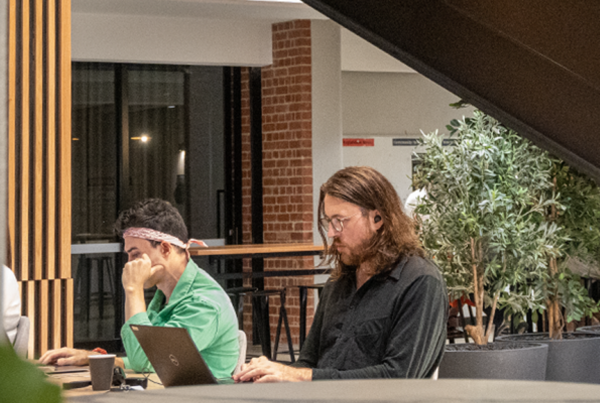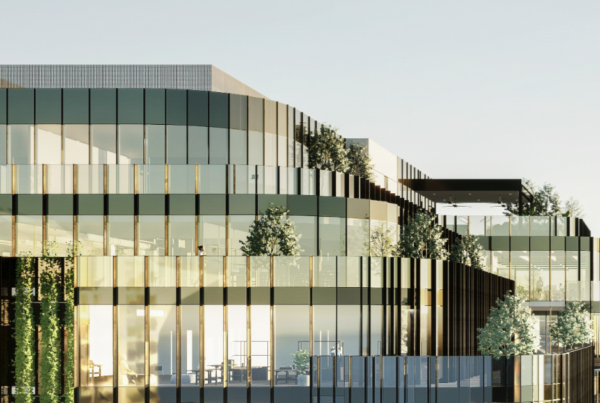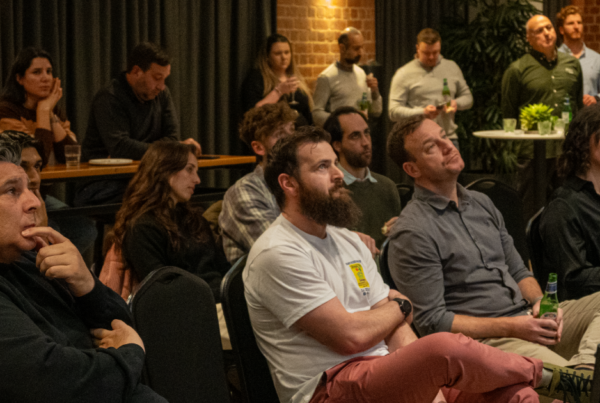
As the war for talent’ continues, CEOs’ and their company’s highest priority is to attract the best talent possible. We’re seeing more organizations realize that they need to invest more in their people; it’s their biggest and most valuable asset. Innovation depends on people and a company is only as good as the talent it can attract and retain. Companies are already attempting to draw in the best employees with modern workspaces and top-tier amenities.
In 2018, the workplace, employee benefits, and even the nature of jobs are changing. Old-fashioned top-down management with industrial-style office places and traditional workers is no longer what is expected nor what creates the best outcomes for people and a business’s bottom line.
The work will still get done. It’s just that it will get done closer to where people live, by people who not only ask for time to take care of themselves and family needs but expect it. Those people may be contingent workers, freelancers, or staff employees. And if business leaders want the best talent to work for them, they’ve got to spend a bit more on human-centered perks and make work fit into people’s lives.
So what are these workplace trends telling us and what can we do?
1. Offering flexible work options is now a competitive advantage
According to a 2016 Gallup survey, 51% of employees said they would change jobs for one that allowed them to work more flexible hours, while 37% would change jobs if they could work from where they wanted at least part of the time. Job seekers are demanding a flexible work environment, and if you don’t offer that in 2018, you will lose talent to your competitors who are.
It’s more possible than ever to offer flexible hours and remote work options. Thanks to video conferencing, CRM software, project management tools, group chat tools, and smartphones, you don’t have to watch people work to know they are producing.
2. Workspaces become more flexible and open
Flexible alternatives to co-working, activity-based workspaces, unassigned seating, and resimercial office design are rapidly increasing as the workplace increases the types of flexible work environments. In 2018, we will start to see the workplace become even more flexible. As organizations evolve, new workspaces will need to allow people to connect rapidly across all levels.
We are living in an environment where technology is rapidly increasing the speed and amount of knowledge we are exposed to. For businesses to better manage themselves, communicate, and share ideas, that information must flow outside of traditional hierarchal structures. Organizational structures are rapidly evolving, but the flow of information should not be inhibited. New workplaces are increasing in variety and types to accommodate a much broader range of functions, and people are moving to the space that best supports their work. Many organizations are limited by the concept of Ownership of space, which runs deep in the culture. As that begins to erode, you will see an increasing amount and variety of options. If you’re interested in learning more about this concept, make sure to check out the book Team of Teams: New Rules of Engagement for a Complex World‘ by General Stanley McChrystal.
3. Workplace culture becomes more autonomous and horizontal
As organizations move to remain relevant and to enable growth and agility to be able to keep up with the rate of change, we are seeing more teams operating with a horizontal, agile, and cross-functional team structure. This allows teams to function independently, autonomously, and in a self-organised manner in alignment with clear organizational strategy and targets.
We have a new generation of leaders and employees who are expected to be able to feel a part of the creative process and the work being done, and as many of our manual tasks are delegated to AI and technology our role as humans in an organization is becoming more to do with the right hemisphere of our brains – this is known as the Conceptual Age.
It is important that to attract and retain today’s brightest thinkers and attuned ‘feelers,’ we have to create more space in the very design of our team culture to allow for flexibility and autonomy.
4. Annual performance reviews evolve into more continuous reviews.
One of the biggest discussions in HR circles is performance reviews, how to transform them, and implement something new that serves both managers and employees.
Professionals today desire instant feedback, a behavior they’ve adopted from the instant gratification they receive on social networks like Twitter and Facebook. Younger generations are especially impatient and are unwilling to wait a whole year to learn about their strengths and areas of improvement. A whole one-fourth of employees feel that annual performance reviews don’t help improve their performance. The annual performance review is coming to an end on a global scale as Generation Zs and millennials are currently receiving feedback either daily (19%), weekly (24%), or regularly (23%). In the United States, 28% of Gen Z and 17% of millennials receive feedback regularly. Two of the largest companies in the world, including GE and Adobe, have already abolished their annual review process in exchange for regular feedback. Adobe, the first major company to step away from annual performance reviews, created a “Check-In” system, where expectations are set annually but feedback is given regularly, resulting in a 2% decrease in voluntary attrition. GE followed suit by creating “Touchpoints,” where there is a daily development focusing on results and changing business demands, which has resulted in a five times increase in productivity in the past year.
This increased velocity in learning and iteration enables there to also be more trust developed between managers and teams to therefore suit a more flexible and autonomous working model.

5. Office attire and workplace culture become more casual.
Several years ago, Virgin Founder Richard Branson was on the cover of Forbes Magazine with a pair of scissors cutting off his tie, calling for the end of business formal attire. With the rise of younger generations, and more employees working remotely, there’s no doubt that the workplace is increasingly casual. In 2017, you will see a continuation of this trend, with more employees demanding to drop their suits and ties in exchange for jeans and shirts. The Bureau of Labor Statistics shows that about one-third of American employees do some or all of their work from home, and as someone who has worked from home for years, I can tell you that I’m not wearing a suit here! Today, 50% of managers say that employees wear less formal clothing than they did five years ago and nearly one-third would prefer to be at a company with a business casual dress code.
So let’s wrap this up for you. We know flexibility is something today’s top talent is demanding. We also know that to enable agility and adaptability in the workplace, we need to be moving towards flexibility and autonomy. Which of the above points are you moving towards already? Which are you not just yet? We’d encourage you to begin taking small steps toward integrating each of these 5 points.
Follow us on Facebook or LinkedIn for regular, invaluable insights into leadership, innovation, and wellbeing.
About United Co.
United Co. is a business centre offering flexible workspace for businesses of any size. By offering an inspiring and engaging workspace with a strong focus on wellbeing we empower people to feel better at work. Our services and designed to boost productivity and creativity.
Explore our coworking memberships and private offices to see how you can experience a better workspace.




